Mark Sisson's Blog, page 53
March 2, 2021
Can You Eat an Intuitive Keto Diet?
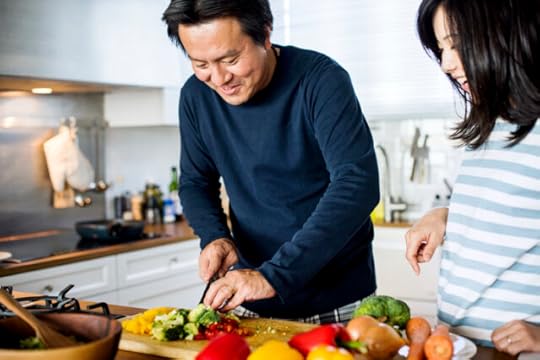 When you first start following a keto diet, overthinking is pretty much part of the package. For better or worse, keto newbies spend a lot of time learning what they can and can’t eat, meticulously weighing and measuring food, and tracking everything that goes in their mouths.
When you first start following a keto diet, overthinking is pretty much part of the package. For better or worse, keto newbies spend a lot of time learning what they can and can’t eat, meticulously weighing and measuring food, and tracking everything that goes in their mouths.
Weighing, tracking, and restricting become understandably tedious after a while. I do know some people who are happy to maintain this level of dietary vigilance for months or even years, but most people fizzle out. Those who don’t want to return to a more relaxed way of eating like Primal look for a compromise position—a keto diet without all the fuss.
This raises the question: is monitoring and careful control of your food intake simply part and parcel of keto, or is it possible to follow a keto diet intuitively?
What Does Intuitive Keto Even Mean?There’s an apparent contradiction between eating intuitively and keto dieting. Eating intuitively means listening to your body, honoring the signals it sends you, and not controlling or restricting your food intake based on external rules. Keto diets come with an inherent set of rules and restrictions.
At the very least, keto diets have to be low-carb by definition. In practice, this means there are many high-carb foods that you can’t eat in any appreciable amount. Even a small serving could interfere with ketosis. Many folks also set parameters around their keto diets, like they have to be gluten-free or sugar-free. As I have explained previously, that’s not technically true, but those are common values in the keto community.
If your inner voice urges you to eat a couple candy bars, a peanut butter and jelly sandwich on white bread, or even a large bowl of mango, you can’t comply and still be ketogenic. You can’t listen to your intuition. Thus, if such a thing as an intuitive keto exists, it has to involve some sort of compromise.
That said, I believe when people say “intuitive keto diet,” they mean keto without all the fuss and micromanaging. That is possible. Lots of people do it by:
Eating mostly animal products, vegetables, nuts and seeds, and fats (all low-carb foods)Eating when they are hungry, not rigidly adhering to a set eating windowAllowing hunger to guide how much and how often they eat in any given dayNot tracking macrosThat’s how I would define an intuitive keto diet, anyway, and the definition I’ll use for the rest of this post. One could argue, though, that that’s neither keto nor intuitive, not really.
Eating Intuitively Versus Intuitive EatingIt’s impossible to talk about intuitive keto without clarifying the difference between eating intuitively and Intuitive Eating (with a capital I-E for clarity). The former is loosely defined as eating according to your body’s hunger cues and desires for different foods. The latter is a specific eating philosophy developed in the mid-1990s by two registered dietitians, Evelyn Tribole and Elyse Resch, that is still popular today.
Any kind of purposeful keto diet, no matter how relaxed, is antithetical to an Intuitive Eating approach. Intuitive Eating specifically rejects dieting, particularly that which focuses on dieting for intentional weight loss. Moreover, one of Intuitive Eating’s core principles is giving yourself unconditional permission to eat any foods in any amount your body wants.
Theoretically, someone could practice Intuitive Eating and naturally arrive at a keto diet over time if their body feels best eating low-carb foods. However, it’s impossible to be Intuitive-with-a-capital-I if you start with keto macros. So it’s crystal clear, any version of intuitive keto I discuss here is entirely separate from an Intuitive Eating approach.
Does Intuitive Keto Work?It depends on your goals. Intuitive keto can work for people who want to follow a low-carb diet, don’t want to overthink it, and don’t necessarily care about being in ketosis all the time.
That’s not to say that it’s impossible to stay in ketosis and eat intuitively. You could very well stay in ketosis without monitoring your macros if you eat mostly animal products and low-carb veggies. However, if you include a greater variety of vegetables, fruits, and nuts, plus maybe some dark chocolate and wine, you’ll have to be ok with living in what Mark calls the “keto zone”—moving fluidly in and out of ketosis depending on your daily carb intake, meal timing, and exercise.
Can You Lose Weight on an Intuitive Keto Diet?Maybe. If you naturally eat in an energy deficit without tracking your food, then yes.
Realistically, though, weight loss isn’t the best use case for intuitive eating. With intuitive eating, the goal is to let your body be in charge. Intentional weight-loss efforts usually involve overriding your body’s cues and eating set amounts instead of eating according to hunger. You can simultaneously work on eating more intuitively and also hope to lose weight, but trying to lose weight with intuitive eating is paradoxical.
Side note: I’ve also known people who consistently undereat on keto because they simply aren’t hungry. That’s not good either. Intuitive keto also wouldn’t be ideal for these folks. They’re better off at least loosely tracking food intake and making sure to eat enough.
Can You Eat Intuitively and Get the Cognitive Benefits of Keto?Again, maybe.
Some people enjoy noticeable boosts in focus and mental clarity on a keto diet. Those benefits depend on being in ketosis, and they might only be noticeable above a certain ketone level (which differs from person to person). If you want to guarantee ketosis, you’ll either have to track your carb intake or strictly limit yourself to very low-carb foods.
A possible workaround is eating a more relaxed, intuitive keto diet but supplementing with MCT oil or exogenous ketones.
Can You Eat Intuitively and Still Be Fat-Adapted?Yes. Ketosis isn’t a prerequisite of being fat-adapted. A low-ish-carb Primal diet is all it takes to become a fat-burning beast. There’s no need for diligent macro tracking or keto-level carb restriction.
Pros and Cons of Intuitive Keto Compared to Typical Ketogenic DietsPros:
No food tracking means intuitive keto is less time consumingEating more mindfully can help you reconnect with your internal wisdom around food and learn to trust your body’s signals“Dieting” isn’t for everyone, especially people who have struggled with unhealthy eating behaviors in the pastThinking less about food frees up mental space for other activities and interestsCons
May move in and out of ketosis if carb intake doesn’t stay low enoughDoesn’t allow you to control food intake or manipulate macros, which may be desirable for weight loss, certain health conditions, or self-experimentation (as my friends Tyler Cartwright and Luis Villasenor from KetoGains say, “You can’t manage what you don’t measure.”)How to Eat an Intuitive Keto DietEven if intuitive keto is your ultimate goal, I’d suggest starting with the Keto Reset approach: Start by eating Primally. Decrease carb intake gradually and intentionally until you are consuming less than 50 grams of carbs per day. Then, spend at least three weeks monitoring what you eat, ensuring that you stay below this threshold. This gives you some time to become keto-adapted.
During this time, pay attention to what you’re eating. Note which foods in your repertoire have the most and fewest carbs and which are the most satisfying. Practice eating more mindfully.
Once you have a good handle on what a typical day of ketogenic eating looks like, you can start to loosen up on the food tracking. See how you feel and whether you’re still making progress toward your goals, whatever they might be.
As a compromise position, you could consider a period of lazy keto. Ignore how derisive the term is; lazy keto simply means that you only track carb intake. Otherwise, you let food intake vary from day to day based on hunger and what sounds good. It’s not truly intuitive since you’re enforcing a carb limit still, but it’s more relaxed than a keto diet where you adhere to set macros (carbs, fat, and protein).
Is Intuitive Keto an Oxymoron?Having said all this, one could argue that intuitive keto is an oxymoron. On one side, strict keto dieters might say that your diet isn’t really ketogenic if you aren’t making sure to keep your carbs down. On the other, intuitive eating proponents will probably point out that there’s nothing intuitive about any way of eating that starts with enforced carb restriction. There’s certainly no such thing as intuitive keto in the way Tribole and Resch use the word intuitive.
This is both a semantic and a philosophical argument. If you eat only certain foods or food groups, but you eat as much of them as you want whenever you want, is that still eating intuitively? I can’t answer that definitively. (By the same token, could someone ever eat an intuitive carnivore or an intuitive vegetarian diet?)
Although keto purists might disagree, I do think it’s possible to eat a more chilled-out version of keto that:
Doesn’t involve meticulously weighing and tracking your foodDoesn’t restrict calories or overall food intake, but allows you to listen to your body’s hunger cues and respond accordinglyMakes room for occasional excursions into higher-carb eating if constant ketosis isn’t important to you (there aren’t any keto police to confiscate your keto card)Ultimately, intuitive keto probably isn’t the best term for it since both words already come with strong connotations. Flexible low-carb that doesn’t involve micromanaging but still gets the job done is too wordy. We’ll stick with “keto zone” around here for now, but I’m open to suggestions for what to call this. Let me know in the comments.
(function($) { $("#dfYzWdP").load("https://www.marksdailyapple.com/wp-ad..." ); })( jQuery ); 
The post Can You Eat an Intuitive Keto Diet? appeared first on Mark's Daily Apple.



March 1, 2021
Is Oatmeal Good for You? It Depends.
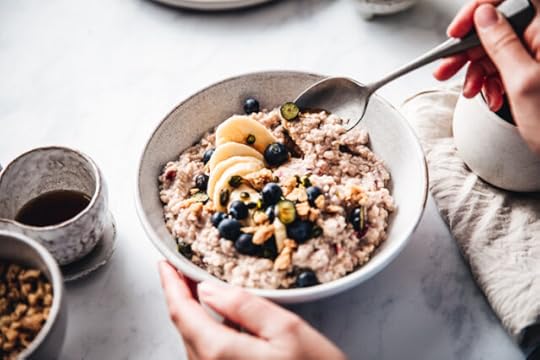 A lot of foods exist on a spectrum of suitability, from “really bad” wheat to “not so terrible” rice. Well, what about the rest of them? Since I get a lot of email asking whether oats and oatmeal are good for you, I figured I would dig into that question for this post.
A lot of foods exist on a spectrum of suitability, from “really bad” wheat to “not so terrible” rice. Well, what about the rest of them? Since I get a lot of email asking whether oats and oatmeal are good for you, I figured I would dig into that question for this post.
Though I was (and still mostly am) content to toss grains on the “do not eat” pile, I think we’re better served by more nuanced positions regarding grains. Not everyone can avoid all grains at all times, and not everyone wants to avoid all grains at all times. For those situations, it makes sense to have a game plan, a way to “rank” foods.
Today, we’ll go over the various forms of oats and oatmeal, along with any potential nutritional upsides or downsides.
First: What Is an Oat?
The common oat is a cereal grain, the seed of a species of grass called Avena sativa. Its ancient ancestor, Avena sterilis, was native to the Fertile Crescent in the Near East, but domesticated oats do best in cool, moist climates like regions of Europe and the United States. They first appeared in Swiss caves dated to the Bronze Age, and they remain a staple food crop in Scotland.
Forms of OatsThere are seven forms of oats that are typically available for purchase:
Whole Oat Groats. The “whole grain” form of an oat is called a groat and is rarely sold as-is, except maybe as horse feed or in bird seed mixes. Instead, they’re sold either as steel-cut, rolled, or instant oats.Scottish Oats. These are stone ground, which are thought to make a creamier oatmeal than steel cut.Steel Cut, or Irish Oats. Steel cut oats are, as the name suggests, cut into a few pieces per grain with a steel blade. These retain the most nutrients (and antinutrients like phytic acid) and taste nuttier and chewier than old-fashioned oats, quick oats, or instant oats.Old-fashioned Oats, or Rolled Oats. Rolled oats are steamed and then rolled into flat flakes.Quick Oats. Quick oats are rolled thinner than old-fashioned oats for quicker cooking.Instant Oats. Instant oats are rolled even thinner than quick oats, so they can be cooked with only hot water.Oat flour. Oat flour starts with the whole oat groat and is ground into a fine powder.Why Are Oats Bad for You?Oats aren’t bad for everyone, but people avoid them for a few reasons. The main problems with oats are the phytic acid, which has the tendency to bind minerals and prevent their absorption. Another concern is the avenin content, which is a protein in the prolamine family that some people cannot tolerate.
As far as phytic acid (or phytate) goes, oats contain less than corn and brown rice but about the same amount as wheat.
Recipe to try: Noatmeal with Blueberries and Collagen
How to Reduce Antinutrients in OatsSome say soaking is sufficient for removing a portion of the antinutrients in oats. Others say you need lactic acid fermentation to neutralize the antinutrients.
SoakingSoaking involves soaking the oats overnight in water with a tablespoon or so of acid, either from lemon juice or from apple cider vinegar.
Lactic Acid FermentationAs I understand it, you can further reduce antinutrients by lactic acid fermentation. I’m not sure the degree to which phytate can be deactivated, but one study does show that consuming oats that underwent lactic fermentation resulted in increased iron absorption.
Other sources claim that simple soaking isn’t enough, since oats contain no phytase, which breaks down phytate. Instead, you’d have to incorporate a phytase-containing flour to do the work; a couple tablespoons of buckwheat appear to be an effective choice for that. Combining both lactic acid bacteria (whey, kefir, or yogurt), companion flour (buckwheat), water, and a warm room should take care of most of the phytate… but that’s a lot of work!
Avenin in OatsAvenin appears to have some of the same problems as gluten in certain sensitive individuals, although it doesn’t appear as if the problem is widespread or as serious. Kids with celiac disease produced oat avenin antibodies at a higher rate than kids without celiac, but neither group was on a gluten-free diet. When you put celiacs on a gluten-free diet, they don’t appear to show higher levels of avenin antibodies.
It looks like once you remove gluten, other, potentially damaging proteins become far less dangerous. One study did find that some celiacs “failed” an oats challenge. Celiac patients ate certified gluten-free oats, and several showed signs of intestinal permeability, with one patient suffering all-out villous atrophy, or breakdown of the intestinal villi. A few out of nineteen patients doesn’t sound too bad, but it shows that there’s a potential for cross-reactivity.
Do Oats Contain Gluten?Oats are often cross-contaminated with gluten because they often grow close to one another in the fields, and seeds don’t always stay where you put them. Certified gluten-free oats are not processed in the same facility as gluten grains, and they are grown far away from wheat fields.
So, if you have celiac disease and you are going to experiment with oats, make sure they’re certified gluten-free.
Why do oats get so much praise from health organizations, like the American Heart Association?Oats contain a specific type of soluble fiber called beta-glucan that increases bile acid excretion. As bile acid is excreted, so too is any serum cholesterol that’s bound up in the bile. (That’s the idea behind the bean protocol, which we covered earlier.) The effect is a potential reduction in serum cholesterol.
In rats with a genetic defect in the LDL receptor gene – their ability to clear LDL from the blood is severely hampered – there’s some evidence that oat bran is protective against atherosclerosis. Of course, the very same type of LDL-receptor-defective mice get similar protection from a diet high in yellow and green vegetables, so it’s not as if oat bran is a magical substance.
Like other prebiotic fibers, oat bran also increases butyrate production (in pigs, at least), which is a beneficial short-chain fatty acid produced by fermentation of fibers by gut flora with a host of nice effects. Overall, I think these studies show that soluble fiber that comes in food form is a good thing to have, but I’m not sure they show that said fiber needs to come from oats.
Nutritional Profile of Oats and OatmealOats also appear to have a decent nutrient profile, although one wonders how bioavailable those minerals are without proper processing.
A 100 gram serving of oats contains:
389 calories16.9 grams protein66 grams carbohydrate10.6 grams fiber (with just under half soluble)7 grams fat (about half PUFA and half MUFA)4.72 mg iron177 mg magnesium3.97 mg zinc0.6 mg copper4.9 mg manganeseOatmeal is a perfect example of the essentially tasteless, but oddly comforting food that’s difficult to give up (judging from all the emails I get). It’s tough to explain, because it’s not like oatmeal is particularly delicious. It’s bland, unless you really dress it up with dried fruits, sweet syrups, and other blood-sugar spiking ingredients that Primal, paleo, and keto folks would rather avoid.
I suspect it’s more than taste. I myself have fond childhood memories of big warm bowls of oat porridge steaming on the breakfast table. I’d add brown sugar, dig in, and head out to adventure through blustery New England mornings with a brick of pulverized oats in my happy belly. The nostalgia persists today, even though I don’t eat the stuff and have no real desire to do so.
Still, since I had some steel-cut oats laying around the house from a past houseguest who absolutely needed his oats, I decided to give them a shot. To self-experiment. To – gasp! – willingly and deliberately eat some whole grains. They were McCann’s Irish oats. Raw, not steamed, and of presumably high quality.
It was… okay. The liberal amount of butter I added quickly disappeared without a trace, and I had to stop myself from adding more because that would have been the rest of the stick. The berries and cinnamon looked and smelled great, but they were swallowed by the blandness. I even added a tablespoon of honey but couldn’t taste it. It was satisfying in the sense that it provided bulk in my stomach.
A half hour after, I felt kinda off. It’s hard to describe. A spacey, detached feeling? Slightly drugged? However you want to describe it, it didn’t feel right. Only lasted half an hour or so, though. My digestion was fine, and I never felt bloated besides the initial “brick in the stomach” feeling.
That’s my experience with oatmeal. Yours may be different.
My opinion of oats as a food? Better than wheat, worse (and more work to improve) than rice. I won’t be eating them because I frankly don’t enjoy them, there are numerous other food options that are superior to oats, and I don’t dig the weird headspace they gave me, but I’ll admit that they aren’t as bad as wheat. If I want starch, I’ll go for some sweet potatoes.
What about you folks? Do you eat oats? Would you be willing to soak, ferment, and cook them? Let me know how it works, or worked, out for you!
(function($) { $("#dfWJsex").load("https://www.marksdailyapple.com/wp-ad..." ); })( jQuery ); 
References https://pubmed.ncbi.nlm.nih.gov/18649490/https://pubmed.ncbi.nlm.nih.gov/24705269/https://pubmed.ncbi.nlm.nih.gov/28025036/https://pubmed.ncbi.nlm.nih.gov/32969629/https://pubmed.ncbi.nlm.nih.gov/31012999/https://pubmed.ncbi.nlm.nih.gov/29594974/https://www.atsjournals.org/doi/full/10.1513/pats.201007-050RNwww.sciencedirect.com/science/article/pii/S0160412020322108
The post Is Oatmeal Good for You? It Depends. appeared first on Mark's Daily Apple.



Is Oatmeal Good for You?
 A lot of foods exist on a spectrum of suitability, from “really bad” wheat to “not so terrible” rice. Well, what about the rest of them? Since I get a lot of email asking whether oats and oatmeal are good for you, I figured I would dig into that question for this post.
A lot of foods exist on a spectrum of suitability, from “really bad” wheat to “not so terrible” rice. Well, what about the rest of them? Since I get a lot of email asking whether oats and oatmeal are good for you, I figured I would dig into that question for this post.
Though I was (and still mostly am) content to toss grains on the “do not eat” pile, I think we’re better served by more nuanced positions regarding grains. Not everyone can avoid all grains at all times, and not everyone wants to avoid all grains at all times. For those situations, it makes sense to have a game plan, a way to “rank” foods.
Today, we’ll go over the various forms of oats and oatmeal, along with any potential nutritional upsides or downsides.
First: What Is an Oat?
The common oat is a cereal grain, the seed of a species of grass called Avena sativa. Its ancient ancestor, Avena sterilis, was native to the Fertile Crescent in the Near East, but domesticated oats do best in cool, moist climates like regions of Europe and the United States. They first appeared in Swiss caves dated to the Bronze Age, and they remain a staple food crop in Scotland.
Forms of OatsThere are seven forms of oats that are typically available for purchase:
Whole Oat Groats. The “whole grain” form of an oat is called a groat and is rarely sold as-is, except maybe as horse feed or in bird seed mixes. Instead, they’re sold either as steel-cut, rolled, or instant oats.Scottish Oats. These are stone ground, which are thought to make a creamier oatmeal than steel cut.Steel Cut, or Irish Oats. Steel cut oats are, as the name suggests, cut into a few pieces per grain with a steel blade. These retain the most nutrients (and antinutrients like phytic acid) and taste nuttier and chewier than old-fashioned oats, quick oats, or instant oats.Old-fashioned Oats, or Rolled Oats. Rolled oats are steamed and then rolled into flat flakes.Quick Oats. Quick oats are rolled thinner than old-fashioned oats for quicker cooking.Instant Oats. Instant oats are rolled even thinner than quick oats, so they can be cooked with only hot water.Oat flour. Oat flour starts with the whole oat groat and is ground into a fine powder.Why Some People Avoid OatsThe main problems with oats are the phytic acid, which has the tendency to bind minerals and prevent their absorption. (Ingestion is not absorption, remember.) Another concern is the avenin content, which is a protein in the prolamine family (along with gluten from wheat, rye, and barley, and zein, from corn). As far as phytic acid (or phytate) goes, oats contain less than corn and brown rice but about the same amount as wheat.
Recipe to try: Noatmeal with Blueberries and Collagen
How to Reduce Antinutrients in OatsSome say soaking is sufficient for removing a portion of the antinutrients in oats. Others say you need lactic acid fermentation to neutralize the antinutrients.
SoakingSoaking involves soaking the oats overnight in water with a tablespoon or so of acid, either from lemon juice or from apple cider vinegar.
Lactic Acid FermentationAs I understand it, you can further reduce antinutrients by lactic acid fermentation. I’m not sure the degree to which phytate can be deactivated, but one study does show that consuming oats that underwent lactic fermentation resulted in increased iron absorption.
Other sources claim that simple soaking isn’t enough, since oats contain no phytase, which breaks down phytate. Instead, you’d have to incorporate a phytase-containing flour to do the work; a couple tablespoons of buckwheat appear to be an effective choice for that. Combining both lactic acid bacteria (whey, kefir, or yogurt), companion flour (buckwheat), water, and a warm room should take care of most of the phytate… but that’s a lot of work!
Avenin in OatsAvenin appears to have some of the same problems as gluten in certain sensitive individuals, although it doesn’t appear as if the problem is widespread or as serious. Kids with celiac disease produced oat avenin antibodies at a higher rate than kids without celiac, but neither group was on a gluten-free diet. When you put celiacs on a gluten-free diet, they don’t appear to show higher levels of avenin antibodies.
It looks like once you remove gluten, other, potentially damaging proteins become far less dangerous. One study did find that some celiacs “failed” an oats challenge. Celiac patients ate certified gluten-free oats, and several showed signs of intestinal permeability, with one patient suffering all-out villous atrophy, or breakdown of the intestinal villi. A few out of nineteen patients doesn’t sound too bad, but it shows that there’s a potential for cross-reactivity.
Do Oats Contain Gluten?Oats are often cross-contaminated with gluten because they often grow close to one another in the fields, and seeds don’t always stay where you put them. Certified gluten-free oats are not processed in the same facility as gluten grains, and they are grown far away from wheat fields.
So, if you have celiac disease and you are going to experiment with oats, make sure they’re certified gluten-free.
Why do oats get so much praise from health organizations, like the American Heart Association?Oats contain a specific type of soluble fiber called beta-glucan that increases bile acid excretion. As bile acid is excreted, so too is any serum cholesterol that’s bound up in the bile. (That’s the idea behind the bean protocol, which we covered earlier.) The effect is a potential reduction in serum cholesterol.
In rats with a genetic defect in the LDL receptor gene – their ability to clear LDL from the blood is severely hampered – there’s some evidence that oat bran is protective against atherosclerosis. Of course, the very same type of LDL-receptor-defective mice get similar protection from a diet high in yellow and green vegetables, so it’s not as if oat bran is a magical substance.
Like other prebiotic fibers, oat bran also increases butyrate production (in pigs, at least), which is a beneficial short-chain fatty acid produced by fermentation of fibers by gut flora with a host of nice effects. Overall, I think these studies show that soluble fiber that comes in food form is a good thing to have, but I’m not sure they show that said fiber needs to come from oats.
Nutritional Profile of Oats and OatmealOats also appear to have a decent nutrient profile, although one wonders how bioavailable those minerals are without proper processing.
A 100 gram serving of oats contains:
389 calories16.9 grams protein66 grams carbohydrate10.6 grams fiber (with just under half soluble)7 grams fat (about half PUFA and half MUFA)4.72 mg iron177 mg magnesium3.97 mg zinc0.6 mg copper4.9 mg manganeseOatmeal is a perfect example of the essentially tasteless, but oddly comforting food that’s difficult to give up (judging from all the emails I get). It’s tough to explain, because it’s not like oatmeal is particularly delicious. It’s bland, unless you really dress it up with dried fruits, sweet syrups, and other blood-sugar spiking ingredients that Primal, paleo, and keto folks would rather avoid.
I suspect it’s more than taste. I myself have fond childhood memories of big warm bowls of oat porridge steaming on the breakfast table. I’d add brown sugar, dig in, and head out to adventure through blustery New England mornings with a brick of pulverized oats in my happy belly. The nostalgia persists today, even though I don’t eat the stuff and have no real desire to do so.
Still, since I had some steel-cut oats laying around the house from a past houseguest who absolutely needed his oats, I decided to give them a shot. To self-experiment. To – gasp! – willingly and deliberately eat some whole grains. They were McCann’s Irish oats. Raw, not steamed, and of presumably high quality.
It was… okay. The liberal amount of butter I added quickly disappeared without a trace, and I had to stop myself from adding more because that would have been the rest of the stick. The berries and cinnamon looked and smelled great, but they were swallowed by the blandness. I even added a tablespoon of honey but couldn’t taste it. It was satisfying in the sense that it provided bulk in my stomach.
A half hour after, I felt kinda off. It’s hard to describe. A spacey, detached feeling? Slightly drugged? However you want to describe it, it didn’t feel right. Only lasted half an hour or so, though. My digestion was fine, and I never felt bloated besides the initial “brick in the stomach” feeling.
That’s my experience with oatmeal. Yours may be different.
My opinion of oats as a food? Better than wheat, worse (and more work to improve) than rice. I won’t be eating them because I frankly don’t enjoy them, there are numerous other food options that are superior to oats, and I don’t dig the weird headspace they gave me, but I’ll admit that they aren’t as bad as wheat. If I want starch, I’ll go for some sweet potatoes.
What about you folks? Do you eat oats? Would you be willing to soak, ferment, and cook them? Let me know how it works, or worked, out for you!
(function($) { $("#dfBymbJ").load("https://www.marksdailyapple.com/wp-ad..." ); })( jQuery ); 
The post Is Oatmeal Good for You? appeared first on Mark's Daily Apple.



February 27, 2021
Pressure Cooker Beef Pho Recipe
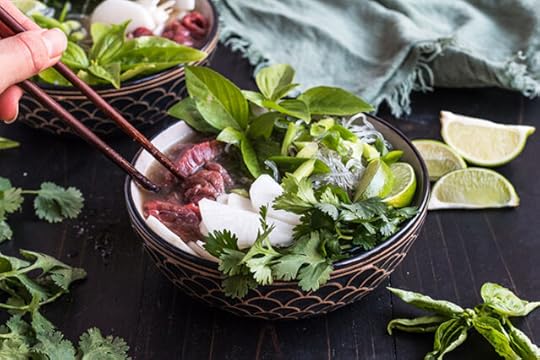 Spring is right around the corner, but for now, the air outside still bites back. This warm-spiced beef pho recipe is just what you need to warm up. Starting with a steaming bowl of rich broth, you build your soup with your favorite ingredients and allow the flavors to get to know each other as they quick-cook right in your bowl.
Spring is right around the corner, but for now, the air outside still bites back. This warm-spiced beef pho recipe is just what you need to warm up. Starting with a steaming bowl of rich broth, you build your soup with your favorite ingredients and allow the flavors to get to know each other as they quick-cook right in your bowl.
While you may love to have an occasional bowl of pho at your favorite neighborhood pho place, you may want a more paleo, Primal, or keto-friendly option. Some places use excessive MSG, and traditionally pho is built upon a substantial pile of carby rice noodles. When you make it yourelf, you can put whatever you want in your bowl.
The Best Beef for Pho, and How to Prepare ItFor this recipe, we used top sirloin and carefully sliced it extra thin with a sharp knife. That’s it! You can also use other types of steak, like eye of round. Fattier cuts may be more difficult to slice thin, so opt for leaner cuts of beef for pho.
How to Make Beef Pho at Home

For the broth:
2 lbs marrow bones2 lb oxtailPrimal Kitchen Avocado Oil Spray1 onion, cut into quarters3 green onions2 inch piece ginger, cut into thick slices4 cloves garlic1 tsp. coriander seed1/2 tsp. black peppercorn1 cinnamon stick1-2 star anise1/4 cup coconut aminos1/2 tbsp. coconut sugar or 1-2 carrotsOptional: 1-2 Tbsp. fish sauce6-7 cups waterBeef Pho Add-in Ingredient Ideas1/2-1 lb. very thinly sliced top sirloinNoodle of choice: shirataki noodle, kelp noodles, zucchini noodles, hearts of palm noodlesHerbs: mint, basil, cilantroThinly sliced vegetables like daikon radish and/or carrotHot peppersSriracha, fish sauce, coconut aminos, red pepper flakesLime wedges

Preheat your oven to 425 degrees. Lay your marrow bones and oxtail on a sheet pan.
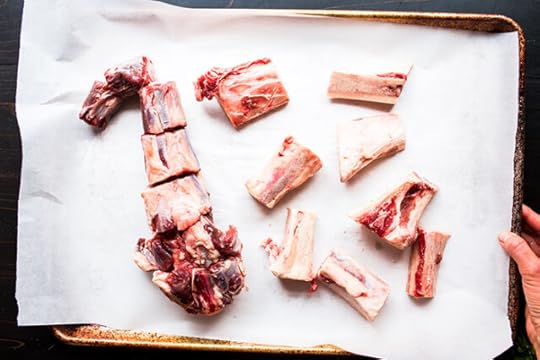
Roast for 20 minutes, then flip them over and roast for an additional 20-25 minutes.
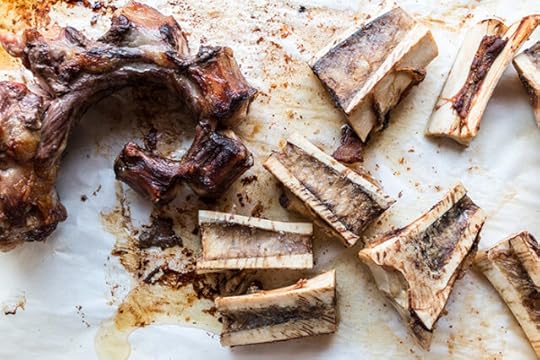
On a second tray, toss the onion, green onions, garlic and ginger in a spray of avocado oil. Roast for 15-20 minutes.
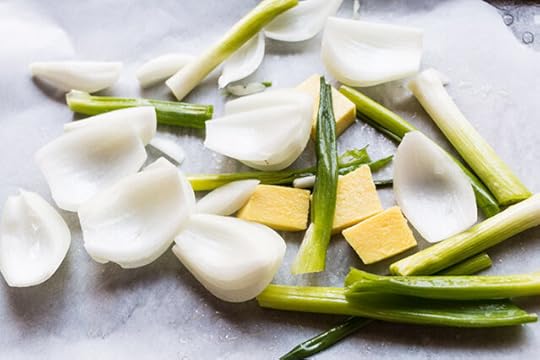
In a small skillet, toast the coriander, peppercorns, cinnamon and star anise for about 1 minute over medium heat, or until fragrant.
Once the bones and vegetables are roasted, place them all into an instant pot. Add the toasted spices, coconut aminos, and coconut sugar.
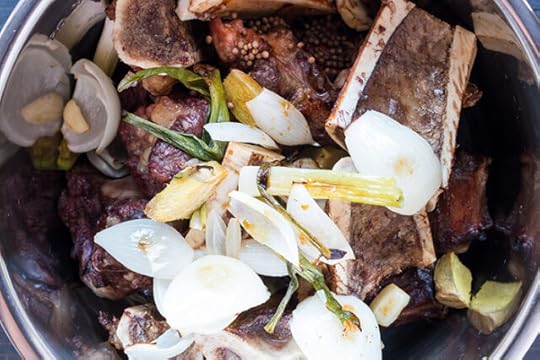
Pour in 6-7 cups of water, or until the liquid is halfway between the 1/2 and 3/4 fill lines. Secure the lid on the Instant Pot and set it to the Soup/Stew Function. Set the Instant Pot to high pressure for 1 hour 45 minutes. After the pot finishes cooking and beeps, allow it to naturally release for 20 minutes. Allow the broth to cool slightly, then strain the broth into containers. Reserve any meaty bits from the oxtail for the soup or other purposes.
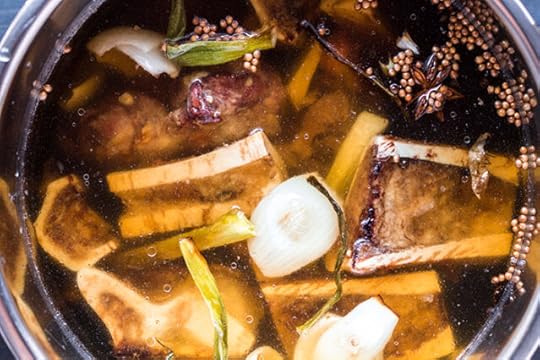
At this point, you can either refrigerate the broth to let the fat separate from the broth, or immediately use it. If you refrigerate, refrigerate overnight and scrape off the fat layer that forms at the top of the broth.
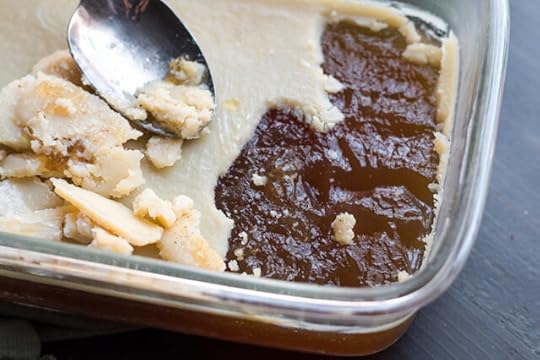
Place the broth in a pot and bring it to a boil. Allow it to simmer for a few minutes.
Very thinly slice your beef. You may find it easier to freeze the piece of beef for a few minutes to help it firm up and be easier to slice.
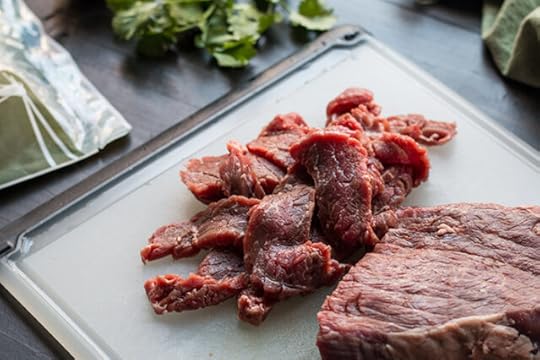 Traditionally, you pour the hot broth over the beef which cooks it to rare, but you can also place the beef into the simmering soup for a short amount of time to cook it more if you’d like. Arrange your bowls with your beef, noodles of choice, and any other add-ins, such as cilantro, basil, mint, daikon radish, and scallions. Feel free to add in any red pepper flakes, sriracha, coconut aminos or fish sauce to taste.
Traditionally, you pour the hot broth over the beef which cooks it to rare, but you can also place the beef into the simmering soup for a short amount of time to cook it more if you’d like. Arrange your bowls with your beef, noodles of choice, and any other add-ins, such as cilantro, basil, mint, daikon radish, and scallions. Feel free to add in any red pepper flakes, sriracha, coconut aminos or fish sauce to taste.
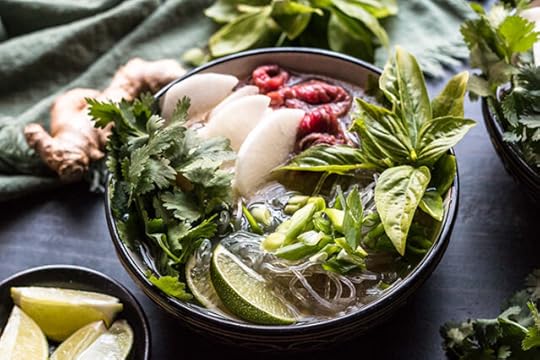


(function($) { $("#dfBwbF3").load("https://www.marksdailyapple.com/wp-ad..." ); })( jQuery ); 
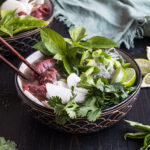 Beef Pho Recipe Author: Courtney Sperlazza
Beef Pho Recipe Author: Courtney Sperlazza  Print Recipe
Print Recipe  Pin Recipe Description
Pin Recipe Description Rich, flavorful beef pho that you can customize with your favorite ingredients.
IngredientsFor the broth:
2 lbs marrow bones
2 lb oxtail
Primal Kitchen Avocado Oil Spray
1 onion, cut into quarters
3 green onions
2 inch piece ginger, cut into thick slices
4 cloves garlic
1 tsp. coriander seed
1/2 tsp. black peppercorn
1 cinnamon stick
1–2 star anise
1/4 cup coconut aminos
1/2 tbsp. coconut sugar or 1–2 carrots
Optional: 1-2 Tbsp. fish sauce
6–7 cups water
Add-in ideas
1/2–1 lb. very thinly sliced top sirloin
Noodle of choice: shirataki noodle, kelp noodles, zucchini noodles, rice noodles
Herbs: mint, basil, cilantro
Thinly sliced vegetables like daikon radish and/or carrot
Hot peppers
Sriracha, fish sauce, coconut aminos, red pepper flakes limes
InstructionsPreheat your oven to 425 degrees. Lay your marrow bones and oxtail on a sheet pan. Roast for 20 minutes, then flip them over and roast for an additional 20-25 minutes.
On a second tray, toss the onion, green onions, garlic and ginger in a spray of avocado oil. Roast for 15-20 minutes.
In a small skillet, toast the coriander, peppercorns, cinnamon and star anise for about 1 minute over medium heat, or until fragrant.
Once the bones and vegetables are roasted, place them all into an instant pot. Add the toasted spices, coconut aminos, and coconut sugar. Pour in 6-7 cups of water, or until the liquid is halfway between the ½ and ? fill lines. Secure the lid on the Instant Pot and set it to the Soup/Stew Function. Set the Instant Pot to high pressure for 1 hour 45 minutes. After the pot finishes cooking and beeps, allow it to naturally release for 20 minutes. Allow the broth to cool slightly, then strain the broth into containers. Reserve any meaty bits from the oxtail for the soup or other purposes.
At this point, you can either refrigerate the broth to let the fat separate from the broth, or immediately use it. If you refrigerate, refrigerate overnight and pick off the fat layer that forms at the top of the broth. Place the broth in a pot and bring it to a boil. Allow it to simmer for a few minutes.
Very thinly slice your beef. You may find it easier to freeze the piece of beef for a few minutes to help it firm up and be easier to slice. Traditionally, you pour the hot broth over the beef which partially cooks it, but you can also place the beef into the simmering soup for a short amount of time to cook it more if you’d like. Arrange your bowls with your beef, noodles of choice, and any other add ins, such as cilantro, basil, mint, daikon radish, and scallions. Feel free to add in any red pepper flakes, sriracha, coconut aminos or fish sauce to taste.
NotesThis broth is made in an instant pot to save time. You can also make it on the stovetop. If cooking on the stovetop, allow the broth to simmer for 8+ hours. When the vegetables start to fall apart, remove them from the broth to prevent them from making the broth cloudy.
For the noodles, you can use shirataki or kelp noodles for low carb options, or even zucchini noodles. You can also use thin rice noodles.
 Did you make this recipe?
Did you make this recipe? Share a photo and tag Mark's Daily Apple — we can't wait to see what you've made!
The post Pressure Cooker Beef Pho Recipe appeared first on Mark's Daily Apple.



February 26, 2021
Weekly Link Love — Edition 119
 Research of the Week
Research of the WeekA large portion of COVID complications were due to metabolic co-morbidities.
You are mostly what you eat.
Keto improves daily function and quality of life in dementia patients.
Giving testosterone to men with type 2 diabetes causes remission in some.
Improving road safety reduces crime.
Episode 472: Mitch Webb: Host Elle Russ chats with Mitch Webb about how he survived Lyme disease, mold toxicity, chronic fatigue, and debilitating anxiety.
Health Coach Radio: Chloe Maleski is focused on fostering the whole human.
Media, SchmediaUnintended consequences of COVID.
Interesting Blog PostsWhat “science” forgot about pandemics (but not everyone).
The biggest findings in archaeology (2020).
Social NotesPlay more video games to “reduce depression” in kids? No thanks.
Everything ElseNo.
Under new food school requirements, meat can “safely” be completely replaced with nuts, seeds, cheese, and soy.
Things I’m Up to and Interested InEpidemiological study alert, albeit one that agrees with my preconceived ideas: High glycemic index-linked to higher cardiovascular mortality.
Podcast you should listen to: The one where I explore what I did before becoming the mayo and MDA king of Malibu.
Feel-good story: Turkish garbage workers create a library from all the books they’ve found over the years.
I heard Peter Attia’s cry of joy from hundreds of miles away: Topo Chico reports having cut PFAS levels in half.
More unintended consequences: People have been missing out on cancer screenings.
Question I’m AskingShould kids wear masks in school? I see the arguments for both sides.
Recipe CornerI’ve been looking for a good mango sago recipe for years.These air-fryer sesame cauliflower bites would be fantastic appetizers for a dinner party.Time CapsuleOne year ago (Feb 12 – Feb 18)
Will Red Meat Cause Your Heart to Explode? – Well, will it?How to Exercise While Fasting – How to do it right and safely.Comment of the Week
“Was Bill Gates elected? No? I’m nervous about people having so much power and influence without a democratic mandate.”
-I’m also worried about people having so much power and influence with a democratic mandate, Hazel.
(function($) { $("#df7qTqh").load("https://www.marksdailyapple.com/wp-ad..." ); })( jQuery ); 
The post Weekly Link Love — Edition 119 appeared first on Mark's Daily Apple.



February 25, 2021
Ask a Health Coach: Stress Eating, Sabotagers, and Why There’s No Wagon to Fall Off Of

Hi Folks! In this week’s edition of Ask a Health Coach, Erin is here to share her insights on the different ways we cope with stress, what to do when you live with a saboteur, and how accountability and self-efficacy can help you stay on track. Got more questions? Go ahead and post them down in the comments below or over in the Mark’s Daily Apple Facebook group.
Lance asked:
I’ve been doing my fair share of stress eating over the past year and I’m ready to clean up my diet. I like the idea of using exercise as a way to de-stress instead of downing junk food. What kind of workout routine do you recommend?
You’re not alone in wanting to reel in your habits. But let’s start by pulling back the curtain on your motivation.
First Off, Is Stress Eating Actually Bad?Anytime we eat for reasons other than to satisfy hunger, it can be classified as emotional eating (and that includes stress eating).https://www.uofmhealth.org/health-lib... It’s a way to cope with or numb the feelings we don’t want to deal with. We’ve all done it. Even me. And although the term gets a bad rap, it’s not necessarily a bad thing.
People who recognize their stress-eating behaviours have better odds of finding healthier ways to cope.https://www.psychmc.com/articles/reco... Why? Simply because we can’t change the things we don’t know we’re doing! That being said, chronic emotional eating can come with negative consequences as you’ve noticed, in addition to harboring feelings of guilt, shame, and the potential to develop more serious disorders.
Chronic Exercise is a Coping Mechanism TooWhen it comes to diet culture, we get the message that binging on bags of chips or overdoing it on ice cream after a tough day is something to be ashamed of, while throwing around free weights to blow off steam should be something to celebrate. Coping is coping. We deal with (or completely avoid) our emotions in so many ways — food, alcohol, TV, and yes, exercise.
Some are just deemed more “acceptable” in the name of health.
Healthier coping strategies, like exercise, may help you tolerate stress or temporarily offer a distraction, but it’s important to face your emotions at some point. And while I firmly believe that movement is imperative for your metabolic health, diving headfirst into workout routine to offset stress-eating sounds like it’s got some less-than-healthy intentions behind it. When you swap one coping mechanism for another, you’re not really doing yourself any favors.
Consistency is the Best ApproachMy recommendations for workout routines are ones you enjoy doing — things you can see yourself doing consistently. https://www.discovermagazine.com/heal... And there’s research to back it up. One study followed participants who’d lost and kept off 30 or more pounds and found that the secret to their success was the consistency of their workouts.https://onlinelibrary.wiley.com/doi/a...
Instead of using exercise as a form of punishment to off-set your behaviors during the pandemic or to cope with guilt or shame, do it because your body is a miraculous organism that deserves to be honored and moved daily. Trust me, you’ll see results without having to spend the better part of your day in the gym.
Jim asked:
Every time my wife and I eat out, she has something snarky to say about what I order. I’m not trying to make her eat like I do, I’d just like her to quit giving me such a hard time simply because I don’t want to eat my burger with a bun. Any tips for dealing with difficult spouses?
People love to judge, don’t they? Unfortunately, humans are wired that way. When they perceive someone’s actions as a threat to their own personal beliefs, they often retaliate with unnecessary snarkiness.
What Your Spouse’s Comments Really MeanEven though her comments are more about her than they are about you, it still makes dining together an uncomfortable experience.https://www.powerofpositivity.com/jud... I see this all the time with my health coaching clients. One-half of a couple decides they’re done feeling fat and foggy, while the other feels “fine” and finds no reason to change how they’re eating. You want their love and support, but instead, you’re stuck with someone who acts irritated or may even try to sabotage your efforts.
How to Deal with a Difficult PartnerI’m a firm believer that you can’t change other people, but you don’t have to let your spouse’s judgements derail your own goals. Here are a few strategies I use with my own clients to help them manage partners who aren’t on the same page:
Have an agreement in advance. Often, there’s a disconnect between what couples expect from each other. Your spouse might know you’re eating paleo, but may not realize that means all the time (not just at home or when you’re being “good”). Let her know what you’re doing, why it’s important to you, and that you’d love to have her support.Be empathetic. It’s easy to feel annoyed in this situation, but consider the emotions your spouse might be experiencing. There’s a good chance she feels insecure, jealous, or worried about your future together, which is causing her to act out.Find common ground. The two of you might not be able to agree on what’s on your plates, but by finding something you both enjoy (hiking, walking, watching movies), you’ll reduce the perceived separation that’s causing tension between you.Get more tips on dealing with a difficult partner in this article I wrote for Mark’s Daily Apple last year.
Rhonda asked:
I’m loosely following a paleo and keto diet, but always seem to let too many treats creep in. I know it’s not good for me (I’m pre-diabetic and heart disease runs in my family), but I keep trying, then falling off the wagon and getting discouraged. What can I do to stay on track?
I’ll start by saying that “falling off the wagon” is kind of a cop out. To me, it’s an excuse people use to give themselves permission to give up. So easy right? You just fall off the wagon and then get back on when it’s convenient for you.
Here’s the deal though. There is no wagon. Which means, there’s no wagon to fall off of or get back on to. This isn’t a diet you try and if it doesn’t work you just shrug your shoulders and chalk it up to “not being right for you”. This is your life, and you have the ability to decide what you want to do with it. And that includes how you feed yourself and whether or not you’re cool with taking actions that contribute to chronic disease.
Start by Believing You CanThere’s a concept in psychology called self-efficacy.https://positivepsychology.com/self-e... It’s basically the idea that if someone believes they can change their behaviors, they’ll be more successful at doing so.
Self-efficacy is measured by how well you deal with temptation or situations that are triggers for you (i.e. treats creeping in). You might want to avoid desserts or stop buying processed foods altogether, but if you feel like you’re incapable of handling the commitment, the challenges, and the ups and downs that inherently come with it, you’re sabotaging yourself from the get-go.
Strong self-efficacy looks like:
Thinking of challenging problems as tasks that can be masteredValuing yourself and your actionsStaying dedicated to your goals even when the going gets toughGetting back on track without wallowing in guilt or shame after a setback Then Hold Yourself AccountableLet me ask you this: do you believe you can prevent diabetes and heart disease through your food choices? Or do you believe you’ll always be addicted to sugar or can’t stick with a plan or that everyone in your family is overweight so you will be too?
Admitting that you’re “loosely” following a plan is a serious disservice to yourself. Get clear on what you’re doing. And I don’t mean “paleo” or “keto”. What are you eating for breakfast tomorrow? What will you do when you get hungry? When and where are you shopping for more meat and veggies? Then, identify the actions you’ll be taking and assess how you’re doing. Most importantly though, figure out why this goal is important to you. Finding your why is a key element for uncovering your real motivation for change — and staying on track.
What else would you add? Share your thoughts in the comments.
(function($) { $("#dfHsoFY").load("https://www.marksdailyapple.com/wp-ad..." ); })( jQuery ); 
References https://www.uofmhealth.org/health-library/aa145852https://www.psychmc.com/articles/recognizing-stress-eatinghttps://www.discovermagazine.com/health/consistent-exercise-is-better-exercise https://onlinelibrary.wiley.com/doi/abs/10.1002/oby.22535 https://www.powerofpositivity.com/judging-people-psychology/https://positivepsychology.com/self-efficacy/
The post Ask a Health Coach: Stress Eating, Sabotagers, and Why There’s No Wagon to Fall Off Of appeared first on Mark's Daily Apple.



February 24, 2021
How I’d Change Higher Education
 In past posts, I’ve said how I’d change grade school, PE class, medical school, and school in general. Today I’ll tell you how I’d change higher education—colleges and universities. This was the hardest one yet to write because the “purpose” of college is so open-ended and vast.
In past posts, I’ve said how I’d change grade school, PE class, medical school, and school in general. Today I’ll tell you how I’d change higher education—colleges and universities. This was the hardest one yet to write because the “purpose” of college is so open-ended and vast.
What is the purpose of the university? Is it to train people get good jobs? Establish careers? Is its purpose to help students figure out who they are and what they believe—to “find themselves”? Is it a grand filter, a way for society to establish and separate the “elite” from the rest? Or is college the grand equalizer, a way for anyone and everyone to obtain a quality education and find their way up in the world?
It can’t be all of those things, and yet it tries to make it work.
It’s where elites go to get eliter.
It’s where kids from poor backgrounds can go to make it and stand out, where your background doesn’t matter anymore—only your ability.
It’s where you experiment with substances and subcultures and belief systems.
It’s where you buckle down and work hard to get ahead.
It’s where you go to party and make friends for life.
Are these disparate goals and identities sustainable?
This is why it’s so hard to make blanket recommendations about college. College is many things at once. If I were to change higher education, though, a safe starting bet would be to make personal responsibility the highest guiding principle. Not blame. Not guilt. Yeah, responsibility would undergird everything the school did—professors, administrators, and students alike.
Responsibility Over Blame and Guilt
Blame foists the problems onto “those people.” It removes you from the equation, changing you into a child who can’t do anything but whine and point fingers. Even if “blame” is accurate, it doesn’t get you anywhere. Blaming others absolves you of the responsibility and most importantly ability to change the trajectory of your life (or the world). It allows you to flail and complain and that’s about it.
Guilt feels like it’s enough. Guilt feels like you’re doing something, but you’re really just feeling sorry for yourself. Nothing moves forward. If anything, because you feel worse about yourself, you’re less likely to make any positive changes or take any steps forward. Also, guilt is often blame in disguise.
Responsibility is the answer to almost all ills.
The beauty of this is that it takes care of itself. If you just stop blaming others or indulging your sense of guilt, you naturally shift toward taking responsibility for your thoughts, actions, and future. If wallowing in unproductive guilt and blame aren’t options, assuming the responsibility and taking the reins are all that’s left over.
Eliminate unnecessary general ed requirements.As I remember it, everyone, no matter the major, had to take basic classes in literature, math, biology, and other sciences and humanities. It sounds good, right? We all want well-rounded individuals entering society with a broad overall knowledge base. Right?
Well, that’s not how it goes. Kids end up taking classes they don’t really care about, often going over things they already took in high school. Either that or the introductory classes are also “weeder” classes that make the material so onerous and boring to filter out the people who are majoring in the subject and don’t really have what it takes. It filters out people who aren’t serious about really being an English major, but it also makes students who are just taking it to fulfill a Gen Ed requirement lifelong haters of reading (or biology, or art, etc).
Incorporate physical culture into the college experience.Instead of loading up on general ed requirements, require that students take at least one physical training class every quarter or semester.
Teach boxing or jiu jitsu.Have a wide range of Olympic lifting, strength training, sprinting classes.Bouldering and rock climbing and rappeling and parkour.Dance of all sorts.Imagine if, instead of just packing on the freshman 15 and binge drinking every weekend, college students were also engaged in the pursuit of physical culture. Movement sessions before tests. Walking lectures. You can’t really stop the partying, but at least you can try to balance it out with some healthy physical activity.
The ability to move one’s body, to strengthen it, to extend its utility and improve its aesthetics is the most general human requirement of all. Higher education should not neglect it.
Outdoor classes.I will never stop banging this drum. Move it all outside. Move entire classes outdoors. If COVID persists, moving classes outdoors would mitigate (and probably mostly eliminate) spread and enhance innate immunity. Furthermore, studying and working outdoors has been shown to improve attentional capacity in people, allowing them to focus on the task at hand more easily.
More internships. Paid ones.Medical school has a great “internship” system. You actually perform work as a doctor as part of your education. You do the thing you’re going through school to become. This is an obvious requirement when you’re training to save people’s lives and decide how to proceed on life or death matters, but I’d argue it belongs in all majors.
An internship would throw people straight into the fight to see who’s actually a good fit. Students who aren’t great students but excel actually doing the work in a realistic environment would rise to the top. Students who aren’t actually suited for the work would be identified and given the chance to switch paths before getting in too deep.
Make it more like technical or trade schools.In a technical school, you get in to learn the skill or set of skills and get out. You’re there to learn a skill and prepare for a career. You’ll often have a job guarantee upon graduation. Employers have close relationships with the schools, both promoting and supporting the curriculum. This would work with other disciplines, too—not just car mechanics and computer technicians.
The “mystique” of the “college experience” is important, but not for everyone. Some people just want to learn a marketable skill and join the workforce.
Reduce costs.I’m not going to go too deep into how we can reduce costs. There are entire books written on the subject, and I won’t try to squeeze it all in here. But the price of a college education has risen dramatically since I was applying and it’s either making college unaffordable for people who could thrive there or forcing people into assuming massive debt just to get a degree. Here are some ideas:
Make colleges accountable for some portion of student debt. If a graduate is 200k in the hole with no sign of being able to pay it back, the education they received probably wasn’t very good. A college should shoulder some of the load. This sounds “unfair” and would be at first but would incentivize better lending. This could go hand-in-hand with job guarantees—student doesn’t get a job within the allotted time frame, the school starts picking up some of the loan.
Eliminate unnecessary bureaucracy. An enormous portion of a college’s education budget goes toward paying administrators who have little to nothing to do with actually providing education. I’d love to see colleges become more spartan institutions, focusing on teaching and research rather than accruing an ever-growing population of administrators.
Alter government-backed loans. A government loan is a free license for colleges to continually raise tuition costs because the most powerful entity in the nation will always be there to pay for it. I would suggest implementing accountability measures on the shoulders of academic institutions who accept government-backed monies, and placing limits on tuition increases in a given timeframe. As it is, it remains largely unchecked.
Make it easier to start a university. Provide more supply and the price drops. A bonus is that it will also introduce more interesting, innovative institutions. I’m not talking about scam universities that take your money without providing a sufficient education. I’m referring to legitimate, accredited institutions. More of those.
Break it up?Maybe colleges should be broken up into smaller schools that specialize in specific disciplines. Every major becomes its own technical school, perhaps loosely affiliated with other schools so that a student could take an elective in a different discipline if he or she so desired. I don’t know if that would eliminate the institutional bloat and inertia or just rearrange it under a different name, but I think it would be a step in the right direction.
As always, the devil is in the details. These are big picture items that would need to be fleshed out in a forum beyond the capacity of a blog post.
But one thing occurs to me as I read over this post: Maybe we should just blow the whole thing up and start all over. The university is ultimately a medieval institution—not in a bad sense, but in a different sense. It was created for a world that no longer exists, a world where knowledge was secret and bound up in physical tomes. If you wanted access to that knowledge, you had to enroll and be accepted. Today, knowledge is cheap, widely available from the comfort of your own pocket, yet the existence of the modern university still assumes the presence of secret knowledge only obtained through direct physical access to exclusive halls of learning.
Is college still relevant? I don’t know anymore. Can it be preserved? Probably, but it’ll have to change.
What do you think, folks? What would you change about higher education?
(function($) { $("#dftOn33").load("https://www.marksdailyapple.com/wp-ad..." ); })( jQuery ); 
The post How I’d Change Higher Education appeared first on Mark's Daily Apple.



February 23, 2021
Orthorexia: Where to Draw the Line Between Healthy Eating and Obsession?
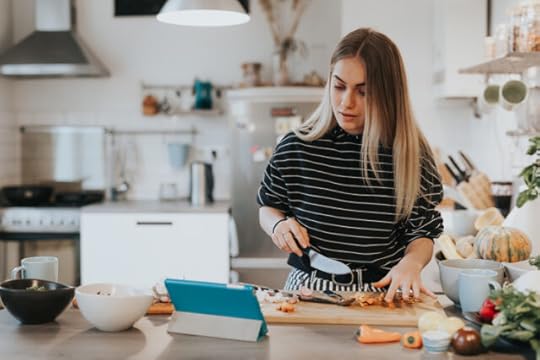 Dr. Steven Bratman coined the term orthorexia (“right appetite”) more than two decades ago to describe what happens when health-conscious diets go too far.
Dr. Steven Bratman coined the term orthorexia (“right appetite”) more than two decades ago to describe what happens when health-conscious diets go too far.
Although it still hasn’t been accepted as an official medical diagnosis, orthorexia nervosa is a proposed eating disorder that involves an extreme obsession with eating a “correct” diet. People with orthorexia nervosa strive to eat only foods they consider healthy and strictly avoid foods they deem to be unhealthy or impure. Their obsession with eating a healthy diet takes over their lives, eventually impairing their mental, social, and even physical well-being.
The topic of orthorexia is controversial within health circles. On the surface, it can be hard to distinguish between folks who are simply health-conscious and those who have crossed the line into disordered eating. Any diet—even relatively mainstream ones like Mediterranean or paleo—could veer into orthorexia depending on the individual.
People who raise concerns about orthorexia often get accused of “fit-shaming.” Then the straw man arguments begin: “Oh, so I guess it’s healthier just to eat Twinkies and Big Macs, then?” No, obviously not. Orthorexia starts with food rules or following diets, but it’s much more than that.
To be clear: Wanting to be healthy is not orthorexic. Neither is believing that some foods are healthier or more nutritious than others. Cutting out certain foods, tracking macronutrients, or following a specific diet is not inherently problematic.
However, those behaviors can be stepping stones to orthorexia, so this is a conversation we need to be willing to have.
What is Orthorexia Nervosa?Orthorexia nervosa is a preoccupation with healthy eating that ultimately interferes with health and well-being.
The first stage involves setting rules and restrictions around what foods you will and will not eat. Specific rules vary from person to person. An individual might avoid gluten, food additives, GMOs, dairy, animal products, nightshades, sugar, artificial sweeteners, grains, or whatever they deem to be unhealthy.
Before you get defensive, understand that food rules are only step one. They are necessary but not sufficient for developing orthorexia nervosa. Many people follow set diets or restrict certain food groups without developing orthorexia. Diet behaviors don’t cross the line into orthorexia nervosa until they start to interfere with quality of life.
Definition of Orthorexia NervosaEating disorders and other mental health disorders each have a set of diagnostic criteria. These are like checklists that help doctors and therapists decide when a particular diagnosis is warranted. Currently, orthorexia nervosa is not recognized as an eating disorder in the Diagnostic and Statistical Manual of Mental Disorders (DSM-V). That means there are no agreed-upon diagnostic criteria.
Nevertheless, researchers and practitioners need to be able to differentiate an ardent healthy-eating enthusiast from someone who has crossed the line into disordered eating. Experts have proposed various ways of defining orthorexia nervosa.https://pubmed.ncbi.nlm.nih.gov/26724... While the specifics deviate somewhat, they share common features:
Behaviors: Obsessive preoccupation with eating only foods one deems “healthy.” Strict avoidance of foods deemed “unhealthy.”Negative effect on mental health or well-being: Behaviors and/or thoughts around food cause stress, distress, fear, or anxiety.Negative impact on social relationships or work: Preoccupation with diet detracts from one’s ability to engage in usual social relationships or do one’s job properlyRight away, you can see that orthorexia nervosa goes beyond mere dieting. Someone can have elaborate, rigid, even seemingly illogical food rules for themselves, but as long as they don’t significantly impact their well-being, those behaviors wouldn’t be considered orthorexic. Orthorexia nervosa requires both dieting and negative psychosocial consequences.
Typically, even the strictest eating behaviors are not considered disordered in people who follow their diet for religious reasons, because they have food allergies or sensitivities, or because it has been prescribed by a doctor to treat a medical disorder.
How Orthorexia Nervosa Compares to Other Eating DisordersThere’s some debate about whether orthorexia nervosa is an eating disorder on its own or whether it’s a variant of anorexia nervosa. The two share common features:
Restricting foodPreoccupation with food rulesStructuring one’s life around one’s dietDeriving some psychological benefits from being compliantHowever, there are also clear distinctions. Weight and body image concerns are central to anorexia nervosa, whereas orthorexia is mainly about health or purity. Both disorders may result in weight loss due to food restriction, but that isn’t the primary goal with orthorexia. Also, people with anorexia usually hide their food restrictions, while people with orthorexia tend to be open about them. They may even try to recruit others to their way of eating.
Orthorexia nervosa also shares features with another eating disorder called Avoidant Restrictive Food Intake Disorder, or ARFID. Folks with ARFID eat an extremely limited number of foods too, but it’s because they find eating to be frightening or discomforting. They aren’t motivated by health or purity concerns.
Warning Signs that Your Healthy Eating Might Be Sliding Toward Orthorexia NervosaMany people, probably most people, can try different diets and eliminate specific foods or food groups without ever going down this path. However, for some people, it’s a slippery slope. Some potential red flags include:
Food rules get stricter over time, so there are fewer and fewer foods you can eat “safely.”Spending excessive time and/or money preparing food. Planning and preparing food starts to crowd out other activities.Self-esteem becomes wrapped up in diet and how well you adhere to your rules. You may start to feel morally superior to others who don’t eat like you.Extreme anxiety or inability to eat food that you didn’t prepare because you can’t be sure it’s clean.Fear, anxiety, or guilt following diet transgressions, perhaps followed by compensatory behaviors like fasting.Strong belief that you can control your current and future health by eating correctly (beyond what would generally be considered reasonable).Again, let me stress that these behaviors exist on a spectrum. You may see glimpses of yourself here, but that doesn’t mean you have an eating disorder. With orthorexia nervosa, your diet and food beliefs significantly impact other areas of your life for the worse.
Who Is at Risk for Orthorexia Nervosa?Orthorexia shares certain features with obsessive-compulsive and anxiety disorders. Individuals with one of these issues may be at greater risk for developing orthorexia nervosa.https://www.ncbi.nlm.nih.gov/pmc/arti... Perfectionism and narcissism may also contribute to orthorexic tendencies.https://pubmed.ncbi.nlm.nih.gov/31075... https://pubmed.ncbi.nlm.nih.gov/27756... More research is needed in each of these areas.
It’s not clear whether orthorexia nervosa is related to gender, age, or BMI.https://www.ncbi.nlm.nih.gov/pmc/arti... Studies have found high rates of orthorexic behaviors among folks like yoga teachers, dieticians, gym-goers, and athletes—sometimes exceeding 80 percent of people studied. However, most of these studies used an instrument called ORTO-15 to measure orthorexia. Other researchers have widely criticized this scale for measuring the behavioral component of orthorexia only.https://pubmed.ncbi.nlm.nih.gov/26724... We’d expect these folks to prioritize healthy eating, but that doesn’t necessarily mean their beliefs or behaviors are problematic.
Healthy Orthorexia Versus Orthorexia NervosaAlthough the concept of orthorexia is more than two decades old at this point, researchers and clinicians are still trying to draw a clear line between healthy and unhealthy concerns about food. In 2018, researchers from two Spanish universities proposed a new tool called the Teruel Orthorexia Scale to separately measure “healthy orthorexia” and orthorexia nervosa.https://psycnet.apa.org/record/2018-2...
Healthy orthorexia is meant to capture a “non-pathological interest in healthy eating.” Scale items for healthy orthorexia include:
I mainly eat foods that I consider to be healthyI don’t mind spending more money on food if I think it is healthierI’d rather eat a healthy food that is not very tasty than a good tasting food that isn’t healthyI try to convince people from my environment to follow my healthy eating habitsAs you can see, people who score highly on this dimension care about their food quality more than the average person, but their behavior isn’t maladaptive (though their friends and partners might not love it).
In contrast, orthorexia nervosa is characterized by items like:
Thoughts about healthy eating do not let me concentrate on other tasksI feel overwhelmed or sad if I eat food that I consider unhealthyIf, at some point, I eat something that I consider unhealthy, I punish myself for itI avoid eating with people who do not share my ideas about healthy eatingA 2019 follow-up study showed that healthy orthorexia is associated with experiencing more positive and fewer negative emotions in everyday life, while the opposite is true for orthorexia nervosa.https://journals.plos.org/plosone/art... Because this is a new measure, we’ll have to wait for more studies to provide insight into this vital distinction.
ConclusionAt its core, orthorexia is “clean eating” taken too far.
Hopefully it’s clear that orthorexia is about much more than simply being health-conscious. As Dr. Bratman explains:
“Adopting a theory of healthy eating is NOT orthorexia. A theory may be conventional or unconventional, extreme or lax, sensible or totally wacky, but, regardless of the details, followers of the theory do not necessarily have orthorexia. …Enthusiasm for healthy eating doesn’t become ‘orthorexia’ until a tipping point is reached and enthusiasm transforms into obsession [sic].”
You can believe that diet profoundly impacts health, avoid specific foods, weigh and track all your food, and still go about your merry way without developing orthorexia nervosa.
But, if you feel your diet taking over your life, or if the thought of eating something off-plan makes you break into a cold sweat, it’s a good idea to seek help. Even though it’s not an officially recognized mental health disorder, many eating disorder specialists focus on treating individuals with orthorexia nervosa. The National Eating Disorders Association (NEDA) hotline is a good place to start.
Orthorexia Nervosa FAQsIs orthorexia an obsession with healthy eating?“Orthorexia” means wanting to eat “correctly.” The term may be used to describe disordered eating, as in orthorexia nervosa. That is an obsession or preoccupation with eating only specific foods that you consider healthy and avoiding foods you think are unhealthy.
What are the main warning signs or symptoms of orthorexia nervosa?The defining characteristics are: (1) having strict food rules about what you will and will not eat based on your definition of “healthy,” and (2) those rules negatively impact your psychological, social, and/or physical well-being. Truly healthy diets should enhance, not detract from, your quality of life.
How common is orthorexia nervosa?No one really knows because of problems with how orthorexia nervosa has been measured in the past. Estimates range from as few as 3 percent of people in the general population to more than 80 percent in health-focused communities, but those numbers may not be reliable.https://pubmed.ncbi.nlm.nih.gov/26724... https://etd.ohiolink.edu/apexprod/rws...
Is fasting or eating only one meal a day the same as orthorexia?Orthorexia nervosa has to do with beliefs about food quality and eating only “healthy” foods. People may also use fasting to try to achieve health, but that isn’t the same as orthorexia. The same goes for excessive exercise. Both can co-occur with orthorexia, but they aren’t themselves orthorexic.
Is my ______ diet orthorexic?No diet is inherently orthorexic, no matter how restrictive it is. Context always matters. You can’t decide if someone’s diet is orthorexic without knowing why they are following it and how it is impacting their emotional health, physical health, social relationships, occupation, and overall quality of life.
(function($) { $("#dfVBf8U").load("https://www.marksdailyapple.com/wp-ad..." ); })( jQuery ); 
References https://pubmed.ncbi.nlm.nih.gov/26724459/https://www.ncbi.nlm.nih.gov/pmc/articles/PMC4340368/https://pubmed.ncbi.nlm.nih.gov/31075324https://pubmed.ncbi.nlm.nih.gov/27756637/https://www.ncbi.nlm.nih.gov/pmc/articles/PMC4340368/https://pubmed.ncbi.nlm.nih.gov/26724459/https://psycnet.apa.org/record/2018-23947-009https://journals.plos.org/plosone/article?id=10.1371/journal.pone.0219609https://pubmed.ncbi.nlm.nih.gov/26724459/https://etd.ohiolink.edu/apexprod/rws_olink/r/1501/10?clear=10&p10_accession_num=kent1585488932218267
The post Orthorexia: Where to Draw the Line Between Healthy Eating and Obsession? appeared first on Mark's Daily Apple.



February 20, 2021
Ginger Turmeric Chicken Soup Recipe
This is the ultimate cold weather soup. Inspired by my mother in law’s delicious turmeric chicken soup, this ginger turmeric chicken soup recipe makes frequent appearances in our rotation all winter long. It’s easy to make, and you’ll usually have most of the ingredients you need on hand – just pick up a couple turmeric roots on your next grocery trip that you can have ready for when the mood strikes.
As with traditional chicken soup recipes, you first make the broth with a whole chicken and aromatics. Then, the fun begins, and you can then add color, texture, and lots of flavor to your soup with grated veggies.
This is my go-to soup when I’m feeling stuffy or under the weather. There’s nothing like a steamy, rich broth with ginger to make me feel clear again.
Health Benefits of Flavorful Rhizomes Like Ginger and TurmericPeople have used ingredients like ginger and turmeric in teas, extracts, in culinary applications, and in capsules for a wide variety of purposes.
GingerA lot of people regularly incorporate ginger for its potential health benefits. Ginger has been used all over the world for centuries for a range of ails including nausea, inflammation, pain, and for its antioxidant properties.https://journals.lww.com/nutritiontod... While we can’t confirm whether it will make a difference in for you, we think it adds a warming brightness and is worth including in a steaming bowl of chicken soup.
TurmericWe have a lot of information here on Mark’s Daily Apple on turmeric. People reach for turmeric when they have issues with joint pain, digestive upset, fever, respiratory issues, and more. What works for some people may not work for others, but it still adds vibrant color and an earthy depth to this chicken soup recipe.
Recipe Tips:When grating the onions, celery, carrots, zucchini and potatoes, use the large holes on your box grater. When grating the turmeric, use a microplane or the tiny grating section on a box grater.For a richer soup, don’t bother straining the chicken fat that accumulates on the top of the soup. You could also add more butter to the pot when sautéing your veggies. If you don’t like cilantro, you can use parsley or dill instead.You can use a pressure cooker or Instant Pot instead of preparing the broth on the stovetop, but I found that the Instant Pot just isn’t large enough to fit the amount of broth, chicken and veggies I wanted to add to the pot and so prefer to use a large stock pot.This is a BIG pot of soup so it will make plenty to feed a family and have leftovers to boot. It also freezes well for quick lunches later!Here’s how to make it.
Ginger Turmeric Chicken Soup Recipe
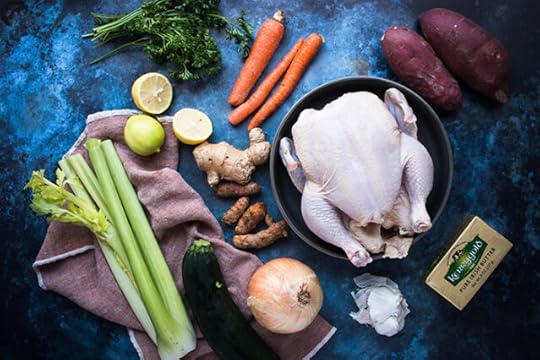
For the chicken and broth:
3.5-4 lb. whole chicken3 carrots3 stalks celery1/4-1/2 onion3 knobs peeled turmeric2-3 inch piece of peeled ginger2 cloves garlichandful of peppercorns1 tsp. salt14-16 cups of water (may be more or less depending on your pot size)For the soup:
5 tbsp. butter1/2 cup grated onion1.5 cups grated celery2 cups grated carrots3 cups grated zucchini1.5 cups grated japanese sweet potato (or regular potato)1-2 knobs of turmeric, peeled and grated1/2 cup cilantrosaltlemon juiceDirectionsPlace your whole chicken in a large stock pot. Fill the pot with water until the chicken is fully submerged, which for our pot was about 14-16 cups.
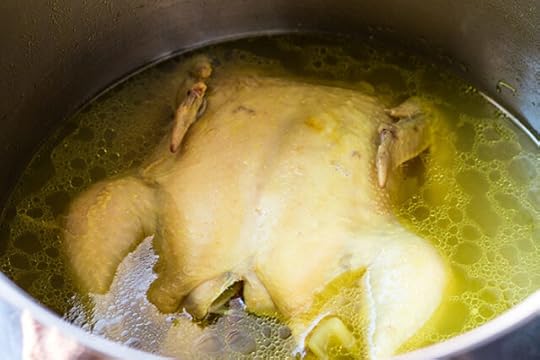 Cut the carrots and celery in 2-3 pieces.
Cut the carrots and celery in 2-3 pieces.
Cut the turmeric, ginger and onion into chunks and smash the garlic.
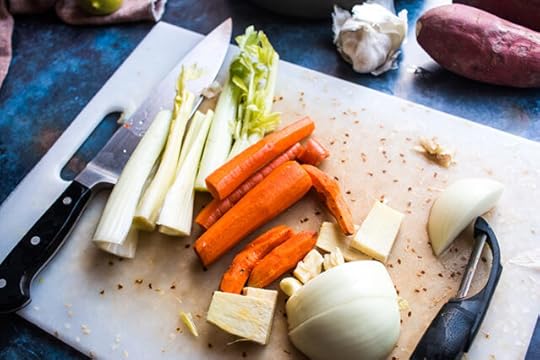
Add the carrots, celery, onion, turmeric, ginger, garlic, peppercorns and salt to the pot.
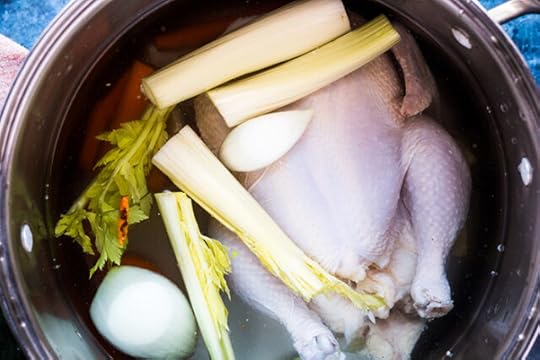 Heat over medium high heat to bring the liquid to a boil. Once the liquid comes to a boil, you can gently skim off any scum that floats to the surface.
Heat over medium high heat to bring the liquid to a boil. Once the liquid comes to a boil, you can gently skim off any scum that floats to the surface.
When the liquid is maintaining a healthy simmer, cover the pot and allow the chicken to simmer for about an hour.
After this time, flip the chicken over and then recover the pot. Simmer for an additional 45-60 minutes, or until the chicken easily comes apart when you pull it out of the pot using tongs.
Remove all of the chicken from the pot with tongs. Carefully strain the broth and remove the aromatics and veggies.
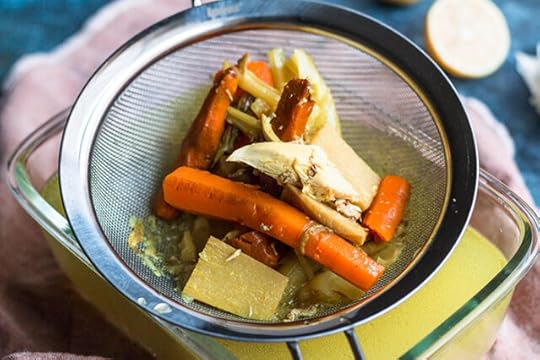
Allow the chicken to cool slightly and pick all of the chicken off of the bones.
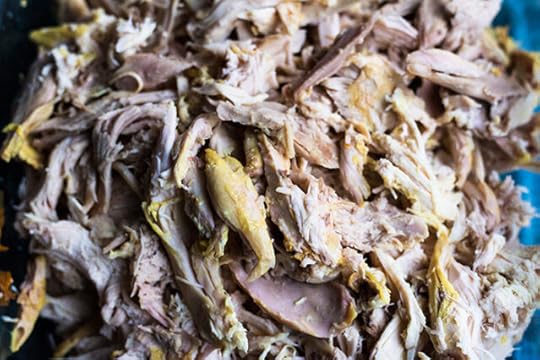
Use a box grater to grate your veggies.
 In the empty pot, melt the butter over medium heat. Once melted and bubbly, add your grated onion, celery and carrots. Stir with a spoon and saute for 2-3 minutes, or until they’re soft.
In the empty pot, melt the butter over medium heat. Once melted and bubbly, add your grated onion, celery and carrots. Stir with a spoon and saute for 2-3 minutes, or until they’re soft.
 Add your zucchini and sweet potatoes and continue stirring until soft. Add your broth back to the pot and bring up to a simmer. Add the shredded chicken and grated turmeric. Season with salt to taste.
Add your zucchini and sweet potatoes and continue stirring until soft. Add your broth back to the pot and bring up to a simmer. Add the shredded chicken and grated turmeric. Season with salt to taste.
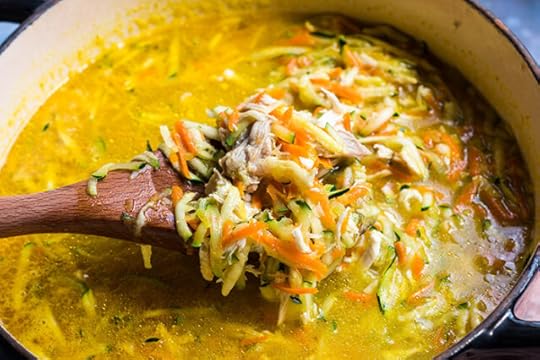
Once the soup comes up to a boil, allow it to simmer for 5-10 minutes.
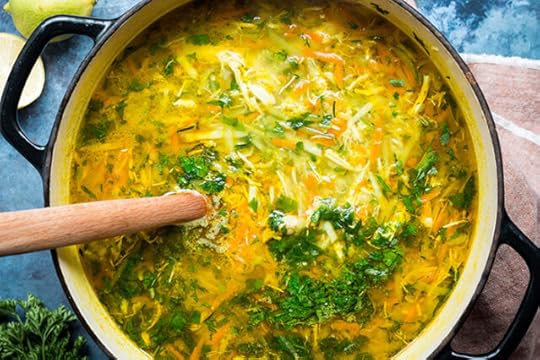 Remove the soup from the heat and stir in the chopped cilantro. Ladle the soup into bowls and top with more cilantro and fresh lemon juice, if desired.
Remove the soup from the heat and stir in the chopped cilantro. Ladle the soup into bowls and top with more cilantro and fresh lemon juice, if desired.
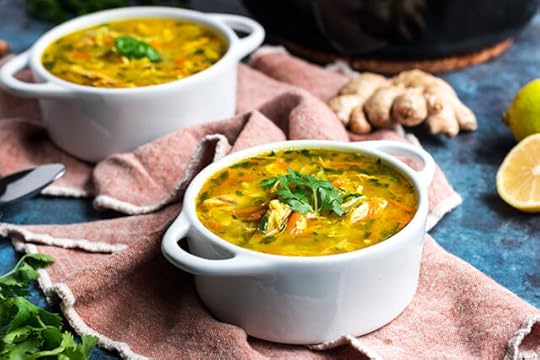
\
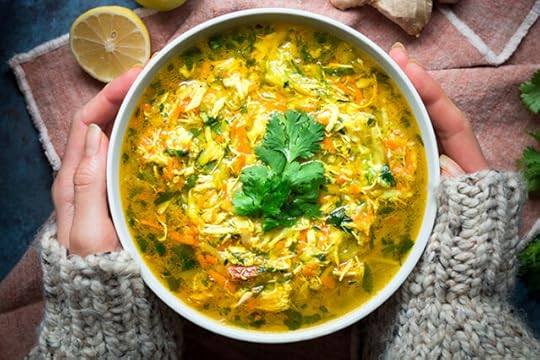
(function($) { $("#dfp5cQ1").load("https://www.marksdailyapple.com/wp-ad..." ); })( jQuery ); 
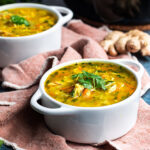 Ginger Turmeric Chicken Soup Recipe Author: Mark's Daily Apple
Ginger Turmeric Chicken Soup Recipe Author: Mark's Daily Apple  Prep Time: 15 minutes
Prep Time: 15 minutes  Cook Time: 2 hours
Cook Time: 2 hours  Total Time: 2 hours 15 minutes
Total Time: 2 hours 15 minutes  Yield: 16 servings Diet: Gluten Free
Yield: 16 servings Diet: Gluten Free  Print Recipe
Print Recipe  Pin Recipe Description
Pin Recipe Description Chicken and vegetable soup flavored with vibrant ginger and bright, earthy turmeric. It’s the perfect, hearty soup for those cold-weather days.
IngredientsFor the chicken and broth:
3.5–4 lb. whole chicken
3 carrots
3 stalks celery
1/4–1/2 onion
3 knobs peeled turmeric
2–3 inch piece of peeled ginger
2 cloves garlic
handful of peppercorns
1 tsp. salt
14–16 cups of water (may be more or less depending on your pot size)
For the soup:
5 tbsp. butter
1/2 cup grated onion
1.5 cups grated celery
2 cups grated carrots
3 cups grated zucchini
1.5 cups grated japanese sweet potato (or regular potato)
1–2 knobs of turmeric, peeled and grated
1/2 cup cilantro
salt
lemon juice
InstructionsPlace your whole chicken in a large stock pot. Fill the pot with water until the chicken is fully submerged, which for our pot was about 14-16 cups. Cut the carrots and celery in 2-3 pieces.
Cut the turmeric, ginger and onion into chunks and smash the garlic. Add the carrots, celery, onion, turmeric, ginger, garlic, peppercorns and salt to the pot.
Heat over medium high heat to bring the liquid to a boil. Once the liquid comes to a boil, you can gently skim off any scum that floats to the surface.
When the liquid is maintaining a healthy simmer, cover the pot and allow the chicken to simmer for about an hour.
After this time, flip the chicken over and then recover the pot. Simmer for an additional 45-60 minutes, or until the chicken easily comes apart when you pull it out of the pot using tongs. Remove all of the chicken from the pot with tongs. Carefully strain the broth and remove the aromatics and veggies.
Allow the chicken to cool slightly and pick all of the chicken off of the bones.
Use a box grater to grate your veggies. In the empty pot, melt the butter over medium heat. Once melted and bubbly, add your grated onion, celery and carrots. Stir with a spoon and saute for 2-3 minutes, or until they’re soft. Add your zucchini and sweet potatoes and continue stirring until soft. Add your broth back to the pot and bring up to a simmer. Add the shredded chicken and grated turmeric. Season with salt to taste. Once the soup comes up to a boil, allow it to simmer for 5-10 minutes. Remove the soup from the heat and stir in the chopped cilantro. Ladle the soup into bowls and top with more cilantro and fresh lemon juice, if desired.
NotesWhen grating the onions, celery, carrots, zucchini and potatoes, use the large holes on your box grater. When grating the turmeric, use a microplane or the tiny grating section on a box grater.
For a richer soup, don’t bother straining the chicken fat that accumulates on the top of the soup. You could also add more butter to the pot when sautéing your veggies. If you don’t like cilantro, you can use parsley or dill instead.
You can use a pressure cooker or Instant Pot instead of preparing the broth on the stovetop, but I found that the Instant Pot just isn’t large enough to fit the amount of broth, chicken and veggies I wanted to add to the pot and so prefer to use a large stock pot.
This is a BIG pot of soup so it will make plenty to feed a family and have leftovers to boot. It also freezes well for quick lunches later!
 Category: Lunch, Dinner
Category: Lunch, Dinner Method: Stovetop, Instant Pot Nutrition Serving Size: 1/8 of recipe Calories: 522 Fat: 34g Carbohydrates: 12g Fiber: 3g Protein: 35g
Method: Stovetop, Instant Pot Nutrition Serving Size: 1/8 of recipe Calories: 522 Fat: 34g Carbohydrates: 12g Fiber: 3g Protein: 35g Keywords: chicken soup, ginger soup, ginger, turmeric, soup
 Did you make this recipe?
Did you make this recipe? Share a photo and tag Mark's Daily Apple — we can't wait to see what you've made!
The post Ginger Turmeric Chicken Soup Recipe appeared first on Mark's Daily Apple.



February 19, 2021
Weekly Link Love — Edition 118
 Research of the Week
Research of the WeekLower LDL, higher diabetes risk.
Vitamin D appears effective against Covid deaths.
Host selenium deficiency not only leaves you open to infections, it promotes the mutation of benign viruses into pathogenic ones.
Researchers were able to have conversations with dreamers during REM sleep.
“One hectare of a milpa comprising maize, common beans, and potatoes can provide the annual carbohydrate needs of more than 13 adults, enough protein for nearly 10 adults, and adequate supplies of many vitamins and minerals, according to the study.”
New Primal Blueprint PodcastsEpisode 470: Diane Forster: Host Elle Russ chats with Diane Forster, a world-renowned expert on blasting through mindset blocks.
Episode 471: Dr Josh Axe: Brad Kearns welcomes Dr. Axe to talk about his new book, Ancient Remedies.
Health Coach Radio: Dr. Al Danenberg discusses managing cancer through immune health.
Media, SchmediaInteresting Blog PostsA good reminder that’s always relevant.
Tyler Cowen’s lessons learned working in a supermarket.
Social NotesThis seems unwise.
Everything ElseGMO Neanderthal brains that fit in your pocket.
What do jobless men do all day?
Things I’m Up to and Interested InI am not surprised: Breast milk is good for babies (in this case, babies’ gut barrier function).
Interesting finding: The average person has between 2-4 passions.
Do you agree?: “Work on things that aren’t prestigious” as career advice.
Another take on vitamin D: From Scott Alexander.
Fascinating paper: Discussing the evolutionary and cultural changes resulting when humans had to start hunting and processing smaller game.
Question I’m AskingShould “rich countries” switch entirely to lab-grown meat?
Recipe CornerMy kinda egg roll.Air-fried lemon chicken bites.Time CapsuleOne year ago (Feb 12 – Feb 18)
How Long Does it Take to Get Rid of Sugar Cravings After Going Keto? – Well, how long?15 Minute Meal Prep: Keto Ground Beef Recipes – Spice things up.Comment of the Week
“I do the same workout every day. A 4 mile hike in the woods. Then over the course of the day,. 3 sets of pushups, pull-ups, bodyweight squats and lunges. I sleep better this way. Two hard workouts per week always gave me insomnia.”
-Sounds ideal, Peter.
(function($) { $("#dfMnqmN").load("https://www.marksdailyapple.com/wp-ad..." ); })( jQuery ); 
The post Weekly Link Love — Edition 118 appeared first on Mark's Daily Apple.



Mark Sisson's Blog
- Mark Sisson's profile
- 199 followers



